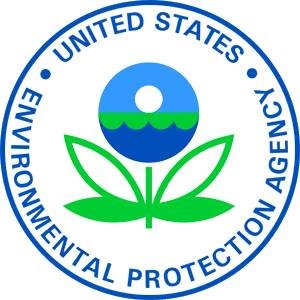EPA announces new definition of waters protected under Clean Water Act
CNN/Stylemagazine.com Newswire | 12/11/2018, 3:18 p.m.
The EPA announced plans to change the definition of which waters in the United States are protected under the Clean Water Act on Tuesday -- a change President Donald Trump has been working toward since the beginning of his administration.
The new rule divides US waters into six categories: traditional navigable waters, tributaries to those navigable waters, certain ditches -- including those used for navigation or affected by the tide, certain lakes and ponds, impoundments and wetlands that are adjacent to water covered by the rule.
The proposal excludes groundwater; ditches, including roadside and farm ditches; prior converted cropland; stormwater control features and wastewater and waste treatment systems. These waters will no longer be regulated by the federal government under the act.
Acting EPA Administrator Andrew Wheeler signed the rule on Tuesday at an event at the agency's headquarters. Army and EPA staff attended the event along with Interior Secretary Ryan Zinke and a handful of senators and representatives. Alaska Republican Sen. Lisa Murkowski and Iowa Republican Sen. Joni Ernst spoke after the rule signing.
Wheeler told reporters the goal of the new rule was to make it "clearer and easier to understand." He said the rule "will result in significant cost savings" while protecting the nation's waterways and reducing "barriers to important economic and environmental projects."
The proposed rule is a policy shift from former President Barack Obama's 2015 waters of the U.S. regulation. Obama's rule changed the definition of what bodies of water the federal government had authority over to include streams and wetlands so that the government could ensure that those waterways remained pollution free. It changed the definition from the initial one established by the EPA and Army Corps of Engineers in the 1980s.
Environmental groups said the new definition protects fewer small waterways and that could result in more pollution and put people at risk.
"We need more protections, not less, when it comes to clean water," said Theresa Pierno, president and CEO of the National Parks Conservation Association, in a statement. "The proposed rule will take us back five decades in our effort to clean up our waterways. In fact, the administration's rule will actually pave the way for pollution that threatens our drinking water and national park waterways."
The policy change is favored by manufacturers and farmers. Almost every senator and representative who spoke mentioned farmers in their remarks. Critics of Obama's 2015 rule, which included some in the farming community, complained that his policy restricted how they could use their land and had a negative economic impact on their business.
National Association of Manufacturers President and CEO Jay Timmons, who attended the event, said the new policy was a "positive step forward for manufacturers" in a statement.
"The uncertainty created by the overreaching and unfair 2015 WOTUS rule threatened manufacturing jobs, and it failed to protect clean water adequately," Timmons said in the statement. "Smart water policy is critical for all of us, and manufacturers are committed to keeping our promise to use the certainty we have been given to do our part to make our water and air cleaner — and our environment healthier. After all, the earth is the only home we have."
Obama's regulation and the new proposed rule both fall under the Clean Water Act, which regulates discharges of pollutants into waters in the US. Under the Clean Water Act, it's illegal to discharge pollutants from a source into "navigable waters," according to the EPA.
The EPA has been working toward a replacement of the regulation since Trump took office. In February 2017, less than two months after his inauguration, Trump signed an executive order asking the EPA and the Department of the Army to review Obama-era water regulations and make sure they are not harming the economy.
The EPA's announcement is another step toward Trump fulfilling a campaign promise. At a campaign event at the Economic Club of New York in September 2016, Trump said he would repeal both the Clean Power Plan and the Waters of the United States rule.
"I will eliminate all needless and job killing regulations now on the books, and there are plenty of them," Trump said. "This includes eliminating some of our most intrusive regulations like the Waters of the US Rule. It also means scrapping the EPA's so-called Clean Power Plan, which the government itself estimates will cost $7.2 billion a year."
A few months after Trump's executive order, in July 2017, the EPA issued a proposed action to repeal the 2015 rule and opened a public comment period through August 2018. On February 6, the Trump administration published a rule in the Federal Register that delayed the rule until 2020 and reverted the Waters of the United States interpretation back to the definition applied in the 1980s, according to court documents.
Several environmental groups sued the federal government through a district court in South Carolina, arguing that the EPA and Department of the Army's repeal of the regulation violated the Administrative Procedures Act by not having a public comment period. The act governs how federal agencies implement and alter regulations.
A federal district court judge sided with environmentalists and issued an injunction nationwide, effectively putting Obama's rule back in place in 22 states, the District of Columbia and US territories, according to the EPA.
Wheeler said the new proposed rule would restore "rule of law" and "end years of uncertainty."
There will be a 60-day comment period, according to the EPA. The agency plans to hold a public hearing and other regional listening sessions before the rule goes into effect.




